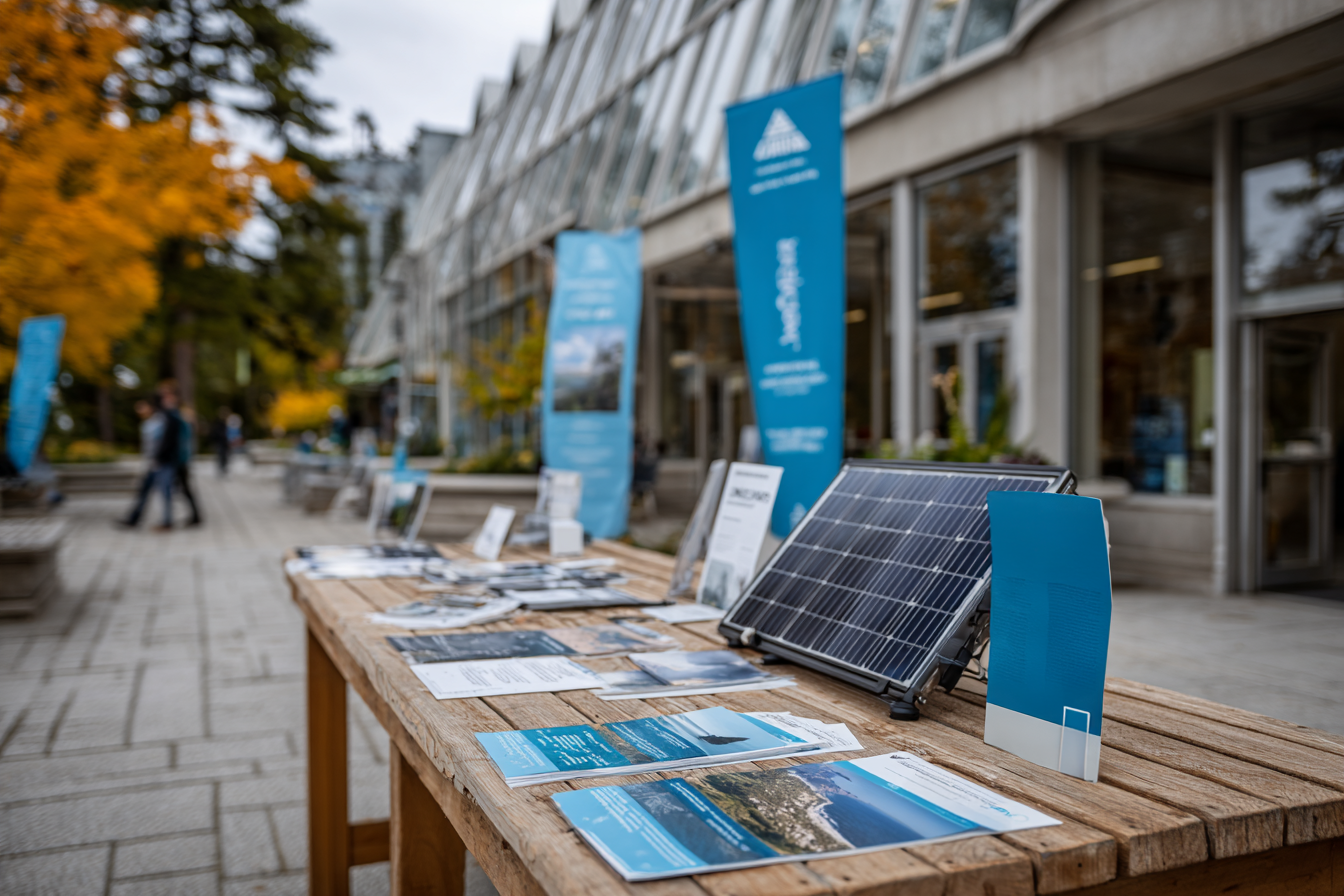Co-Branding and Outreach Strategies for Community Energy Programs

Written by Solenery
2 min read
Introduction
Community clean energy programs succeed not just because of technology or funding, but because they engage people effectively.
When municipalities, NGOs, and community groups collaborate on outreach and branding, they build trust and inspire action.
Co-branding makes programs feel local, relevant, and trustworthy, which is especially important in diverse Canadian communities.
This post explores practical co-branding and outreach tactics that help community energy programs maximize impact.
Whether launching a solar co-op, a retrofit campaign, or a clean heating program, these strategies will help you engage residents, build partnerships, and grow participation.
The Power of Co-Branding: Building Trust Through Partnership
When local governments and NGOs jointly brand outreach materials and campaigns, they:
- Signal credibility and shared commitment
- Reach broader and more diverse audiences
- Leverage the relational trust NGOs have within communities
- Combine resources for wider distribution and promotion
Practical Tips:
- Use both logos on flyers, websites, social media, and event materials
- Develop shared messaging guidelines to maintain a consistent voice
- Issue joint press releases and media outreach
- Engage NGOs in event planning and door-to-door outreach to ensure cultural appropriateness
Example:
In Nova Scotia, Clean Foundation partnered with the Town of Bridgewater to deliver energy workshops that significantly increased program participation compared to government-only outreach.
Crafting Messages That Resonate Locally
National clean energy goals can seem abstract. Messaging works best when focused on benefits that matter to local residents:
- Lower energy bills and increased home comfort
- Cleaner air and healthier neighborhoods
- Local job creation and skills training opportunities
- Inclusive programs tailored to renters, seniors, or low-income households
Tips for Localized Messaging:
- Use testimonials and stories from neighbors and community leaders
- Translate materials into community languages like French, Cree, Punjabi, or Mandarin
- Highlight co-benefits like community pride or environmental stewardship
Outreach Events That Educate and Empower
Events are ideal for building awareness and motivating action.
Successful Event Formats Include:
- Pop-up booths at farmers markets, festivals, or community centers with hands-on demos
- Home energy tours showcasing retrofit success stories
- Retrofit fairs offering on-the-spot energy assessments and rebate eligibility checks
- Panel discussions or Q&A sessions featuring municipal officials and NGO leaders
Example:
A two-day energy event in Montreal co-hosted by Écohabitation and local government booked over 200 home energy audits.
Using Digital Tools for Smarter Outreach
Digital tools make it easier to connect with residents and track results.
Helpful Tools:
- Postal-code lookup apps (like Solenery Insights) to instantly match residents with rebates and programs
- Referral networks between NGOs and contractors to provide warm leads
- Customized landing pages with clear calls to action and program details
- Shared databases or CRMs for managing outreach contacts and follow-ups
Pro Tip:
Co-develop a branded digital hub with partners to centralize information and sign-ups, reducing confusion and increasing participation.
Conclusion
Co-branding and collaborative outreach are the secret ingredients that turn clean energy programs from good ideas into community successes.
By partnering effectively and speaking directly to local priorities, you can build trust, boost participation, and accelerate Canada’s net-zero goals.